What is a Rigid-Flex PCB?
Rigid-Flex PCBs are the synergy of flexible and rigid circuit technologies, creating boards that incorporate attributes of both in a single application. These hybrid boards typically merge several flexible circuit layers with one or more rigid boards, which are combined either inside or on the exterior, as dictated by the application’s specific requirements. The flexible circuits are engineered to withstand repeated flexing and are often pre-shaped into their intended form throughout the production or setup phase.
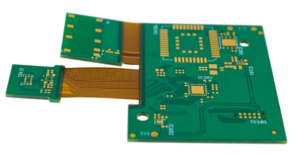
Designing Rigid-Flex PCBs presents unique challenges when compared to standard rigid boards due to the necessity of 3D space planning, thereby enhancing spatial efficiency. This design freedom allows these PCBs to be contorted and configured to fit precisely within the designated enclosure of the end-use application.
Click to get rigid-flex PCB board at PCBPit now >>
Applications of Rigid-Flex PCB Fabrication
The practical uses of Rigid-Flex PCBs are extensive and include modern electronics such as smartphones, digital cameras, and particularly medical devices like pacemakers, where space saving and weight considerations are pivotal. This technology is equally useful in industrial applications involving smart control systems.
For consumer electronics, Rigid-Flex boards improve both space utilization and product reliability by removing the requirement for solder joints and fragile wiring, which are susceptible to connectivity issues. The benefits of Rigid-Flex PCBs extend to a myriad of sophisticated electrical applications, from test gear and hand tools to automotive technology.
Manufacturing Insights into Rigid-Flex PCBs
The process of producing Rigid-Flex prototypes and high-volume assemblies is complex yet established and dependable. The flexible part of these PCBs plays a critical role in confronting the challenges of space and weight constraints while allowing freedom of design.
Engaging with Rigid-Flex fabrication experts early in the design phase can yield substantial advantages, aligning the design efforts with fabrication realities and accommodating end-product variations. Manufacturing Rigid-Flex PCBs demands a more intricate and time-intensive approach compared to conventional rigid boards, with each flexible segment undergoing distinct handling, etching, and soldering techniques.
Advantages of Incorporating Rigid-Flex PCBs
- Spatial needs are minimized through adept 3D design potential.
- Eliminating connectors and wires among rigid sections reduces board dimensions and system mass.
- Component count reduction is often achievable due to shrewd space utilization.
- Fewer soldering points enhance the reliability of electrical connections.
- Compared to flexible PCBs alone, Rigid-Flex options offer easier handling during assembly.
- Streamlining of the PCB assembly phases occurs.
- Inclusion of integrated ZIF contacts facilitates modular connectivity.
- Testing becomes streamlined, permitting comprehensive pre-installation inspection.
- Using Rigid-Flex PCBs notably decreases logistical and assembly expenditures.
- Expansion of mechanical design intricacy is possible, augmenting design choices for housings.
Conclusion
In conclusion, Rigid-Flex PCBs represent a significant leap in printed circuit board technology, offering a perfect balance of flexibility and form stability. The blend of these two types of boards facilitates space and weight economy, enhanced product durability, and design versatility, playing a crucial role in various devices from consumer electronics to medical applications. Although the fabrication process might be complex and intricate, engaging with experienced experts early in the design phase can optimally navigate these complexities. The benefits of Rigid-Flex PCBs are far-reaching, from streamlined testing and assembly procedures to reduced logistical and assembly costs, ultimately paving the way for innovation in electronics design and application.
Share:
More Posts
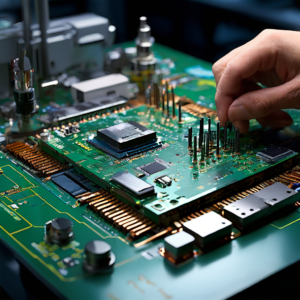
Trends and Challenges in PCB Manufacturing for 2024
Trends and Challenges in PCB Manufacturing for 2024 As we move into 2024, the printed circuit board (PCB) manufacturing industry continues to evolve rapidly, driven
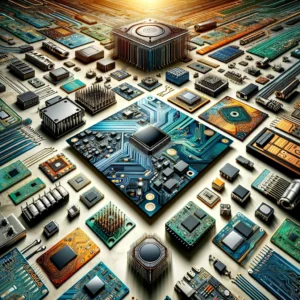
10 Best PCB Manufacturers in India
10 Best PCB Manufacturers in India The electronics manufacturing landscape in India has seen a significant transformation in recent years, with Printed Circuit Board (PCB)
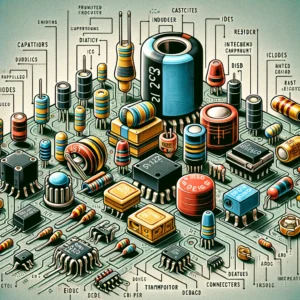
Identifying PCB Components: A Step-by-Step Guide
Identifying PCB Components: A Step-by-Step Guide Printed Circuit Boards (PCBs) are the backbone of modern electronic devices, from simple gadgets to complex machinery. Knowing how
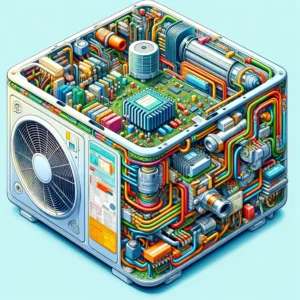
What is PCB in AC?
What is PCB in AC? Air conditioning has become an essential part of our daily lives, providing comfort and a conducive living environment regardless of

